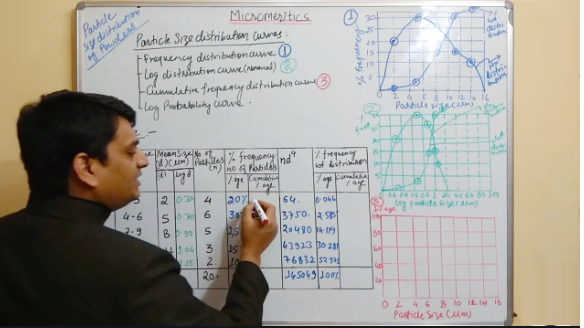Autonomous Disinfection Solution
there is a new technological solution that has emerged in recent years to help combat the spread of disease in public spaces: autonomous disinfection robots. These robots are capable of cleaning and disinfecting public areas without human intervention, making them an ideal solution for high-traffic areas where cleanliness and hygiene are essential.
This blog post will provide an overview of autonomous disinfection robots, their benefits, and the various use cases in which they are used. We will also answer frequently asked questions about this technology and discuss its future potential for further development.
How Do Autonomous Disinfection Robots Work?
Autonomous disinfection robots use various technologies to navigate through public spaces and disinfect them. These robots are equipped with sensors and mapping systems to detect obstacles and map out the area they need to clean.
They use a variety of disinfection methods, including ultraviolet (UV) light, electrostatic sprayers, and dry foggers, to disinfect surfaces and the air in the area.
UV disinfection robots use UV-C light to kill bacteria and viruses on surfaces. The robots emit a high-intensity UV-C light that damages the DNA of microorganisms, rendering them unable to reproduce or cause infections. These robots effectively disinfect line-of-sight surfaces, but they have limited coverage and require dwell time to be effective.
Electrostatic sprayers use a liquid disinfectant that is charged with an electrostatic charge. This creates a fine mist that clings to surfaces and effectively disinfects them. These sprayers effectively disinfect surfaces, fabrics, and hard-to-reach areas, but they also require dwell time to be effective.
Dry foggers, like the Breezy Blue Fogger, use fogging technology to generate a dry fog with particle sizes between 20 and 100 microns. This provides superior coverage for disinfecting surfaces, fabrics, and hard-to-reach areas. Breezy Blue is capable of disinfecting a 1000-square-foot room in 45 seconds.
Benefits of Using Autonomous Disinfection Robots
Using autonomous disinfection robots in public spaces offers numerous benefits. Firstly, these robots are effective in reducing the spread of diseases. Their ability to quickly and efficiently disinfect large areas helps to maintain cleanliness and hygiene in public spaces.
Secondly, using these robots can significantly reduce manual cleaning and disinfection costs. By utilizing robots to disinfect public spaces, companies, and organizations can save costs and increase efficiency by reducing the manual labor required for cleaning and disinfecting.
Lastly, autonomous disinfection robots can give people peace of mind when using public spaces. By ensuring that public spaces are thoroughly disinfected, individuals can feel more confident about the cleanliness and safety of these areas.
The main benefits of autonomous solutions are threefold:
- Efficiency: In many buildings, floorcare is a major undertaking. Even for a skilled operator using a ride-on scrubber dryer, the job can take several hours – hours that could be spent on more detail-oriented objectives. But an autonomous machine gives staff the ability to focus on other tasks that benefit from extra effort. Now, instead of cleaning the floor, that same operator can spend those hours cleaning and disinfecting door handles, light switches, restroom fixtures, and other high-contact surfaces
- Effectiveness. By following staff-programmed paths without deviation, autonomous floorcare solutions can regularly deliver between 98% and 99.5% coverage. Our research shows that when operators use standard floorcare equipment, they typically miss about 15% of a space without meaning to. Given current public-health concerns, every floor should be cleaned from corner to corner – a goal more easily achieved with autonomous equipment.
- Worker safety. Autonomous solutions significantly reduce, and may even eliminate, the amount of time staff members spend in areas where germs may be present. Once a route is programmed into a machine, the machine will clean that same route every time, with no human intervention required. When the cleaning route is completed, or the machine needs assistance, it will notify the operator.
BEST PRACTICES FOR USING AN AUTONOMOUS SCRUBBER DRYER TO PREVENT THE SPREAD OF INFECTION
Follow these best practices to ensure efficient, effective, and safe cleaning with an autonomous machine.
- Clean floors frequently. Adjust your cleaning schedule to reflect heightened hygienic requirements. This may include scrubbing high-traffic areas more often than usual.
- Use approved chemicals. Make sure that the detergent you use is approved for scrubber dryers. To prevent the spread of COVID-19, grocery stores and other retail establishments may want to use hospital-grade cleaning chemicals.
- Clean the machine and all consumables after use. Once the machine has finished its work, clean all parts of the equipment — including squeegees, pads, and brushes — and let them dry thoroughly. Be sure to leave the recovery-tank lid open.
- Adhere to safe practices when programming and/or cleaning the machine. Follow the recommended protocols for personal protection issued by your national, regional, state, and/or local public health authorities (e.g., wearing masks and gloves, washing hands frequently, avoiding touching one’s own face, etc).

